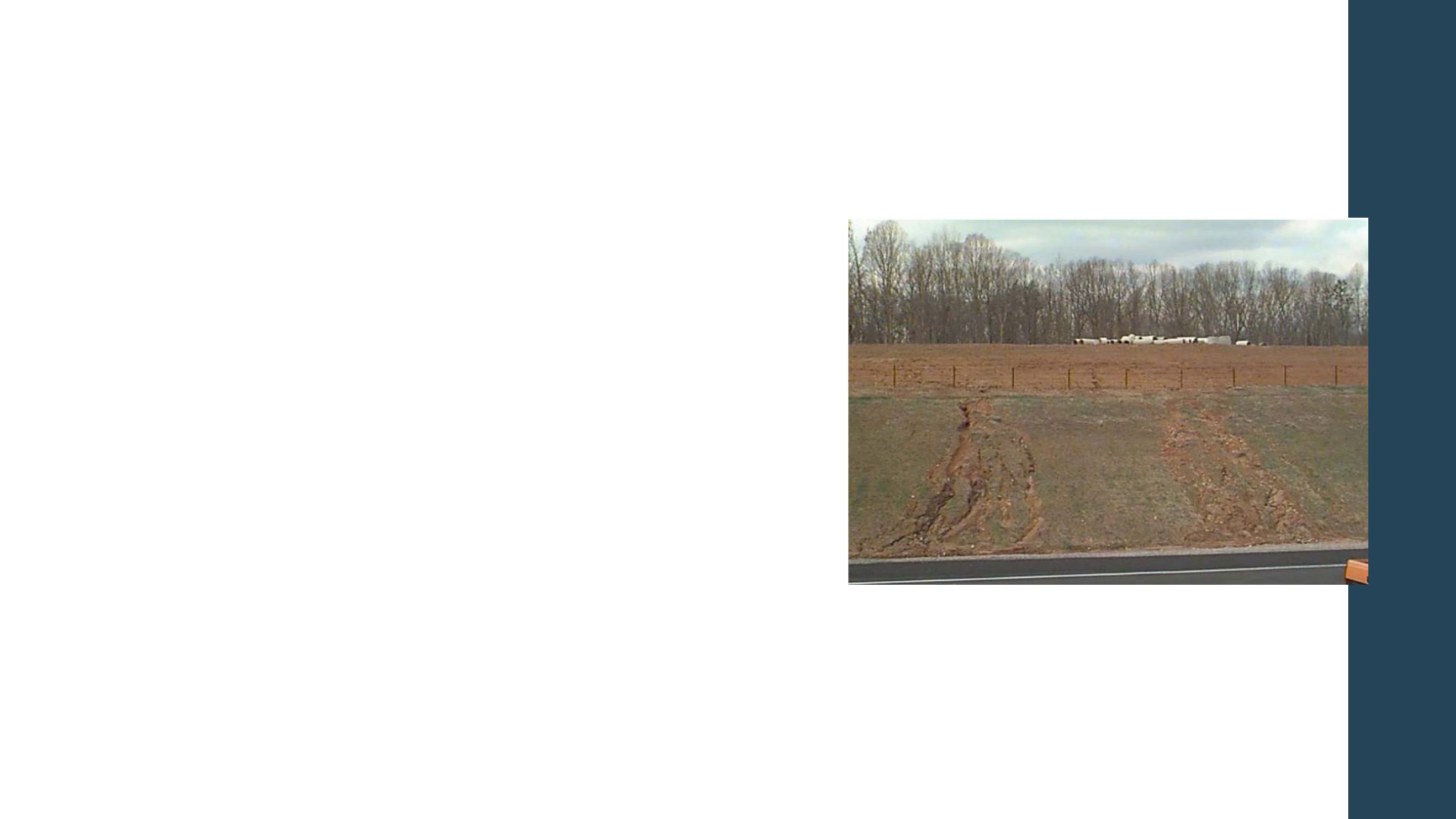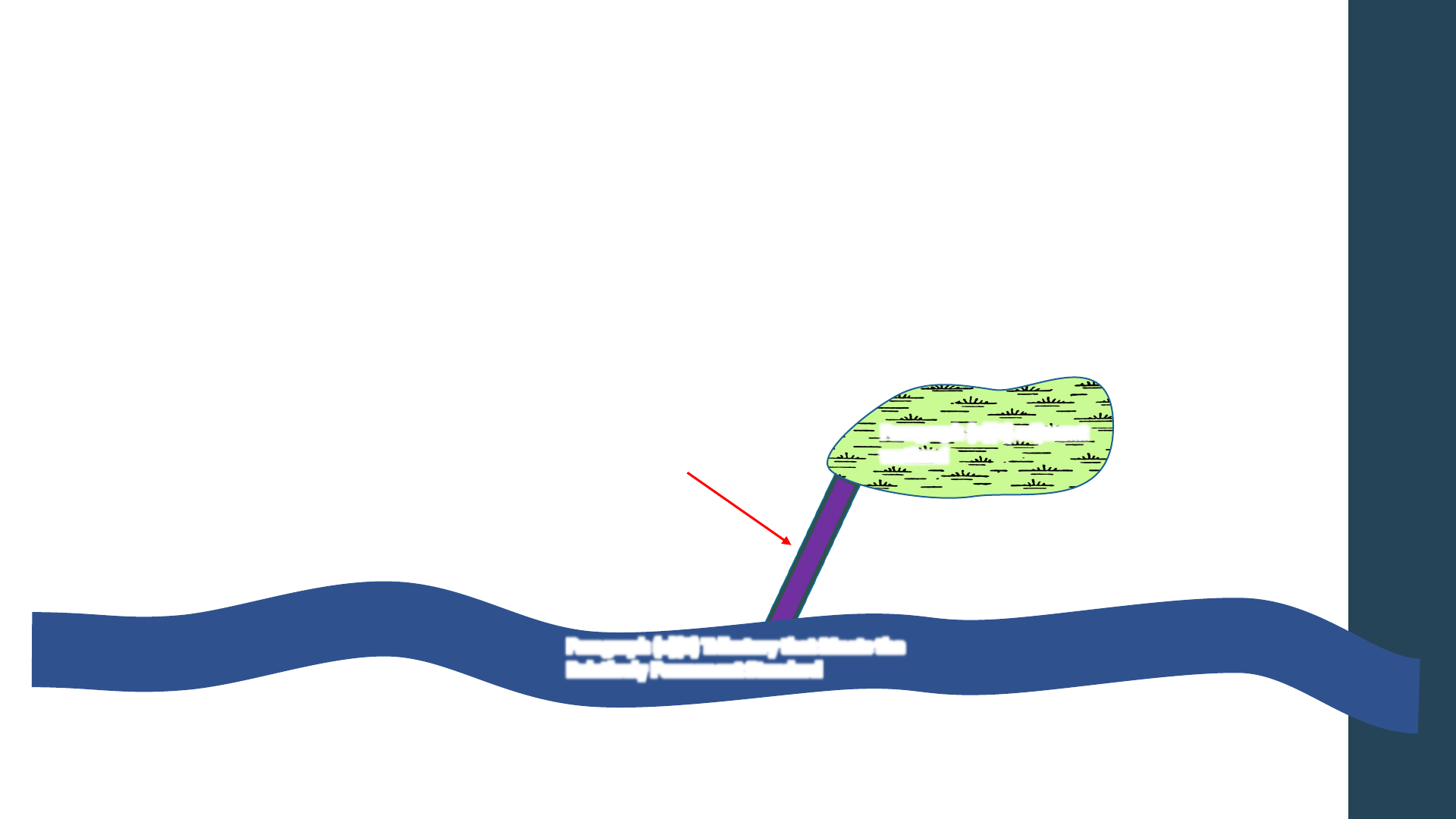
Revised Definition of
“Waters of the United States”
Tribal and State Webinars
Webinar 4:
Exclusions and Other Topics
April 12, 2023
1

Tribal and State Webinar Series
• March 22, 2023: Overview
• March 30, 2023: Relatively Permanent Standard
• April 5, 2023: Significant Nexus Standard
• April 12, 2023: Exclusions and Other Topics
See
https://www.epa.gov/wotus/2023-rule-revised-definition-
waters-united-states-training-presentations for prior webinar
recordings. Please email
wotus-outreach@epa.gov for additional
information.
2

Presentation Outline
Final Rule Framework
Paragraph (a)(2) Impoundments
Exemptions vs. Exclusions
Exclusions from the Definition of
“Waters of the United States”
Questions and Answers
3

Rule Status and Litigation Update
• On March 19, 2023, the U.S. District Court for the Southern District
of Texas granted a motion preliminarily enjoining the 2023 final rule
in Idaho and Texas.
• On April 12, 2023, the U.S. District Court for the District of North
Dakota granted a motion preliminarily enjoining the 2023 final rule
in 24 additional States.
• The agencies are reviewing the decisions and their options.
https://www.epa.gov/wotus/definition-waters-united-states-rule-status-
and-litigation-update
4

Final Rule Framework
Categories of Jurisdictional Waters
(a)(1)
(i) Traditional Navigable Waters
(ii) Territorial Seas
(iii) Interstate Waters
(a)(2) Impoundments of Jurisdictional Waters
(a)(3) Tributaries
(a)(4) Adjacent Wetlands
(a)(5) Intrastate lakes and ponds, streams, and
wetlands that do not fall within (a)(1) – (a)(4)
5
*NOTE: The categories of jurisdictional waters listed on this slide are shorthand categories that are being used for efficiency. See the final regulatory text at 33 CFR 328.3(a)
and 40 CFR 120.2(a) for the full text of the categories.

Final Rule Framework
Exclusions
(b)(1) Waste treatment systems
(b)(2) Prior converted cropland
(b)(3) Certain ditches
(b)(4) Artificially irrigated areas that would revert to dry
land if irrigation ceased
(b)(5) Certain artificial lakes and ponds
(b)(6) Artificial reflection or swimming pools or other
small ornamental bodies of water
(b)(7) Certain waterfilled depressions
(b)(8) Swales and erosional features
(b)(3) – (b)(8):
Pre-2015 “generally non-
jurisdictional features,” added
to the final rule as exclusions
(b)(1) – (b)(2):
Pre-2015 exclusions, modified
in the final rule
6
*NOTE: The categories of exclusions that are listed on this slide are shorthand categories that are being used for efficiency. See the final regulatory text at 33 CFR
328.3(b) and 40 CFR 120.2(b) for the full text of the categories.

7
Jurisdictional Category: (a)(2) Impoundments
“Waters of the United States” include
impoundments of waters that
otherwise meet the definition of
“waters of the United States.”
However, waters determined to be
jurisdictional under paragraph (a)(5),
and that are subsequently impounded,
do not retain their jurisdictional status
under this (a)(2) impoundments
provision. Such waters may still be
determined to be jurisdictional under
another rule category.

8
Paragraph (a)(2) impoundments include:
• (1) Impoundments created by impounding
one of the “waters of United States” that
was jurisdictional under this rule’s
definition at the time the impoundment was
created, and
• (2) Impoundments of waters that at the
time of assessment meet the definition of
“waters of the United States” under
paragraph (a)(1), (a)(3), or (a)(4) of this rule,
regardless of the water’s jurisdictional
status at the time the impoundment was
created.
Jurisdictional Category: (a)(2) Impoundments

The following resources* may be particularly helpful when making a
determination that an impounded water was one of the “waters of the
United States” based on the 2023 Rule’s definition
when the
impoundment was created:
• Aerial photographs
• Topographic maps, including from USGS
• Soil surveys, including from NRCS
• State/Tribal/local maps depicting aquatic resources
• USFWS National Wetlands Inventory maps
• Planning, engineering, and design documents
*Historic resources will be the focus when determining if a water meets this criterion.
Jurisdictional Category: (a)(2) Impoundments
9

Paragraph (a)(2) waters also include impoundments of waters that at the time of
assessment are jurisdictional under paragraph (a)(1), (a)(3), or (a)(4) of
the 2023 Rule regardless of the water’s jurisdictional status at the time the
impoundment was created.
• A water that is impounded may not meet the 2023 Rule’s jurisdictional
criteria at the time the water was originally impounded, but the water may
meet the 2023 Rule’s jurisdictional criteria at the time of the assessment.
• Aquatic resources generally can evolve over time as environmental
conditions change, or due to human-caused changes.
Jurisdictional Category: (a)(2) Impoundments
10

Impoundments of waters that are
determined to be jurisdictional under
paragraph (a)(5) and that are subsequently
impounded
do not categorically retain
their jurisdictional status as “waters of
the United States” under the paragraph
(a)(2) impoundments category.
• Impoundments of paragraph (a)(5)
waters would need to be assessed for
jurisdiction in their current state
under paragraph (a)(1), (a)(3), (a)(4),
or (a)(5) of the 2023 Rule.
Jurisdictional Category: (a)(2) Impoundments
11

• Certain discharges of
pollutants are exempt from
Clean Water Act permitting
requirements under the
statute or EPA regulations.
• Exemptions are codified in the
Clean Water Act or elsewhere
in EPA’s regulations and are
not influenced by the
definition of “waters of the
Untied States.”
12
Exemptions vs. Exclusions
• Certain waters are excluded
from the definition of “waters
of the United States” under the
2023 Rule.
• Exclusions are codified
under paragraph (b) in
regulatory text in the
definition of “waters of the
United States,” not in the
Clean Water Act.

Exemptions
Some exempt activities under section 404(f) of the Clean Water
Act include:
13
See 33 CFR 323.4 for more examples of statutory exemptions. The Clean Water Act also exempts a number of activities
from permitting or from the definition of “point source,” under section 402 of the Act, including agricultural storm water
and irrigation return flows. See 33 U.S.C. 1342(l)(2), 1362(14).
• Normal farming,
silviculture and
ranching activities
• Construction of
irrigation ditches
or maintenance of
irrigation or drainage
ditches
• Construction or
maintenance of logging
roads

Exclusions
(b)(1) Waste treatment systems
(b)(2) Prior converted cropland
(b)(3) Certain ditches
(b)(4) Artificially irrigated areas that would revert to dry
land if irrigation ceased
(b)(5) Certain artificial lakes and ponds
(b)(6) Artificial reflection or swimming pools or other
small ornamental bodies of water
(b)(7) Certain waterfilled depressions
(b)(8) Swales and erosional features
(b)(3) – (b)(8):
Pre-2015 “generally non-
jurisdictional features,” added
to the final rule as exclusions
(b)(1) – (b)(2):
Pre-2015 exclusions, modified
in the final rule
14
*NOTE: The categories of exclusions that are listed on this slide are shorthand categories that are being used for efficiency. See the final regulatory text at 33 CFR
328.3(b) and 40 CFR 120.2(b) for the full text of the categories.

• Paragraph (a)(1) waters, which include traditional navigable waters, the
territorial seas, and interstate waters, are not subject to the exclusions in
the 2023 Rule.
• Even if a paragraph (a)(1) water meets the terms of an exclusion, the
water is not excluded and will be considered jurisdictional as a paragraph
(a)(1) water.
15
Exclusions

16
(b)(1) Exclusion: Waste Treatment Systems
“Waste treatment systems,
including treatment ponds or
lagoons, designed to meet the
requirements of the Clean Water
Act.”

17
(b)(1) Exclusion: Waste Treatment Systems
Implementation:
Excluded waste treatment systems do
not sever upstream jurisdiction.
The exclusion is generally available
only to the permittee using the system
for the treatment function for which
such system was designed.
A waste treatment system that ceases
to serve the treatment function for
which it was designed would not
continue to qualify for the exclusion
and could be deemed jurisdictional if it
otherwise meets the 2023 Rule’s
definition of “waters of the United
States.”

18
(b)(2) Exclusion: Prior Converted Cropland
“Prior converted cropland designated by the Secretary of Agriculture.
The exclusion would cease upon a change of use, which means that
the area is no longer available for the production of agricultural
commodities. Notwithstanding the determination of an area’s status
as prior converted cropland by any other Federal agency, for the
purposes of the Clean Water Act, the final authority regarding Clean
Water Act jurisdiction remains with EPA.”

19
Implementation
The prior converted cropland exclusion encompasses prior
converted cropland designated by USDA, and no additional areas.
Areas USDA has not so designated are not eligible for this Clean
Water Act exclusion.
The final rule exclusion for prior converted cropland only covers
wetlands
.
Wetlands can be covered under the prior converted cropland
exclusion if they meet USDA’s longstanding definition of prior
converted cropland.
(b)(2) Exclusion: Prior Converted Cropland

20
(b)(2) Exclusion: Prior Converted Cropland
Implementation
Prior converted cropland loses
its exclusion status if there is a
“change in use” – meaning the
area is no longer available for
the production of an agricultural
commodity.

21
(b)(2) Exclusion: Prior Converted Cropland
Are the wetlands
within a land area
designated by USDA
as prior converted
(PC) cropland?
Yes
Yes
No
No
Not Excluded
under (b)(2): these
wetlands are not
covered by an existing
USDA prior converted
(PC) cropland
designation.
Does the current or
proposed land use
disqualify the wetlands
from the exclusion?
Assess based on
“change in use.”
Not Excluded under
(b)(2): these wetlands
have lost their exclusion
status due to a change in
use.
Excluded under
(b)(2): these wetlands
are excluded under
paragraph (b)(2)

“Ditches (including roadside ditches)
excavated wholly in and draining only
dry land and that do not carry a
relatively permanent flow of water.”
22
(b)(3) Exclusion: Certain Ditches

Implementation
When assessing the jurisdictional status of a ditch, the agencies will evaluate the
entire reach of the ditch to determine if it has relatively permanent flow, consistent
with the reach approach used for tributaries.
The agencies will assess the flow characteristics of a particular ditch reach at the
farthest downstream limit of the ditch reach (i.e., the point the ditch enters a higher
order in the network).
Where data indicate the flow characteristics at the downstream limit is not
representative of the entire reach of the ditch, the flow characteristics that best
characterize the entire ditch reach will be used.
(b)(3) Exclusion: Certain Ditches
23

(b)(3) Exclusion: Certain Ditches
Implementation
Questions have sometimes arisen regarding the distinctions between ditches and
human-altered natural streams and rivers.
• Alteration or modification of a natural stream or river for flood control, erosion control,
development, agriculture, and other reasons does not convert the stream or river to an
excluded ditch.
• A stream or river that has been channelized or straightened because its natural
sinuosity has been altered, cutting off the meanders, is not a ditch.
• A stream that has banks stabilized through use of concrete or rip-rap (e.g., rocks or
stones) is not a ditch.
In these instances, the altered or modified streams and rivers are not ditches and
would also not satisfy the exclusion for ditches because they are not “excavated
wholly in and draining only dry land.”
24

(b)(3) Exclusion: Certain Ditches
Implementation
Questions have also arisen regarding relocated streams and rivers.
• A stream or river that has been relocated is not a ditch and would also not
satisfy the exclusion for ditches because it is not “excavated wholly in and
draining only dry land.”
• A stream or river that is relocated should be evaluated as a tributary when it
contributes flow directly or indirectly to a paragraph (a)(1) water or paragraph
(a)(2) impoundment.
• A stream or river is considered relocated either when at least a portion of its
original channel has been physically moved or when the majority of its flow
has been redirected.
25

An excluded ditch that connects downstream to a jurisdictional water would not be
jurisdictional merely because of its downstream connection to the jurisdictional water.
Wetlands that develop entirely within the confines of an excluded ditch are not
j
urisdictional.
Paragraph (a)(1), (a)(2), or (a)(3) water
Excluded ditch
(b)(3) Exclusion: Certain Ditches
Wetlands that
develop wholly
within the
confines of an
excluded ditch
26

Examples of Tools and Resources That May Assist With
Identifying Excluded Ditches:
Historic and current topographic maps, including from USGS
Historic and recent aerial photographs
Local, Tribal, and state records and surface water management plans (such as
county ditch or drainage maps and datasets)
National Hydrography Dataset (NHD)
or National Wetlands
Inventory (NWI) data
Agricultural records
Street maintenance data
Precipitation records
Historic permitting and jurisdictional determination records
Certain hydrogeomorphological or soil indicators, including NRCS soil
surveys
Wetlands and conservation programs and plans, functional assessments, and
monitoring efforts
(b)(3) Exclusion: Certain Ditches
27

“Artificially irrigated areas that would
revert to dry land if the irrigation
ceased.”
Implementation
The exclusion applies only to the
specific land being directly irrigated
that would reasonably revert to dry
land should irrigation cease.
28
(b)(4) Exclusion: Certain Artificially Irrigated
Areas

“Artificial lakes or ponds created by excavating
or diking dry land to collect and retain water
and which are used exclusively for such
purposes as stock watering, irrigation, settling
basins, or rice growing.”
Implementation
If a previously excluded feature no longer
meets the terms of the exclusion (e.g., if it is
no longer used for purposes such as stock
watering, irrigation, settling basins, or rice
growing), it is no longer excluded.
29
(b)(5) Exclusion: Certain Artificial Lakes and
Ponds

“Artificial reflecting or swimming pools or
other small ornamental bodies of water
created by excavating or diking dry land to
retain water for primarily aesthetic
reasons.”
Implementation
• For the exclusion to apply, these bodies of
water must have been created by
excavation or diking, wholly in dry land.
30
(b)(6) Exclusion: Certain Artificial Reflecting or
Swimming Pools or Other Small Ornamental
Bodies of Water

“Waterfilled depressions created in dry land incidental to construction activity
and pits excavated in dry land for the purpose of obtaining fill, sand, or gravel
unless and until the construction or excavation operation is abandoned and the
resulting body of water meets the definition of waters of the United States.”
Implementation
The exclusion requires that the waterfilled depression was created
wholly in dry land.
The exclusion includes an abandonment provision.
If a previously excluded feature no longer meets the terms of the exclusion
and/or is abandoned, it is no longer excluded.
31
(b)(7) Exclusion: Certain Waterfilled
Depressions

“Swales and erosional features (e.g., gullies,
small washes) characterized by low volume,
infrequent, or short duration flow.”
Implementation
• Swales are generally shallow features in the
landscape that may convey water across dry
land areas during and following storm events
and typically have grass or other low-lying
vegetation throughout the swale.
• While a swale is a discrete topographic feature,
it does not have a defined channel, nor an
ordinary high water mark (OHWM). This
distinguishes a swale from an ephemeral
stream because ephemeral streams typically
have a channel and at least one indicator of an
OHWM.
32
(b)(8) Exclusion: Certain Swales and Erosional
Features

Implementation
Erosional features can typically be
distinguished from swales because erosional
features are generally deeper than swales
and have an absence of vegetation.
Erosional features can be distinguished from
tributaries by the absence of a channel and
an OHWM
Rills: small incisions formed by overland
water flow eroding the soil surface during
rainstorms.
Gullies: tend to be much smaller than
streams, and are often deeper than they
are wide, with very steep banks,
commonly found in areas without much
vegetation or with soils that are prone to
erosion.
33
(b)(8) Exclusion: Certain Swales and Erosional
Features

34
Exclusions: Additional Considerations
Dry Land
• Some of the exclusions in the 2023
Rule refer to the term “dry land.”
• The preamble explains that the
term “dry land” refers to areas of
the geographic landscape that
do not
include waters such as
streams, rivers, wetlands, lakes,
ponds, tidal waters, ditches, and
the like.

Even when a feature is excluded and therefore is not “waters of the United States,” the
excluded feature may be relevant to the analysis of whether another water is jurisdictional.
For example, excluded surface features (e.g., c
ertain ditches, swales, gullies, or erosional
features) may still contribute to a hydrologic connection relevant for asserting jurisdiction
(e.g., between an adjacent wetland and a jurisdictional water, or between a tributary and the
downstream tributary network).
Paragraph (a)(3) Tributary that Meets the
Relatively Permanent Standard
Excluded
paragraph(b)(8) swale
Provides continuous
surface connection
between an adjacent
wetland and a relatively
permanent water
Paragraph (a)(4) adjacent
wetland
Exclusions: Additional Considerations
35

“Wetlands that develop entirely
within the confines of an excluded
feature are not jurisdictional.” (88
FR 3105)
Exclusions: Additional Considerations
36
Paragraph (a)(1), (a)(2), or (a)(3) water
Excluded feature
Wetlands that develop wholly
within the confines of an
excluded feature
Wetlands that develop within
and outside the confines of an
excluded feature
“However, a wetland may be located
both within and outside the boundaries
of a non-jurisdictional feature or
entirely outside the boundaries of non-
jurisdictional feature. In these
circumstances, the wetland will be
evaluated under this rule’s provisions
for ‘adjacent wetlands’ and paragraph
(a)(5) ‘intrastate lakes and ponds,
streams, or wetlands’ and not
considered as part of the non-
jurisdictional feature.” (88 FR 3105)

Additional Information
• See https://www.epa.gov/wotus for additional information.
• Please contact wotus-[email protected] with questions.
37

Questions and Answers
38
Please type your questions into the chat box.
